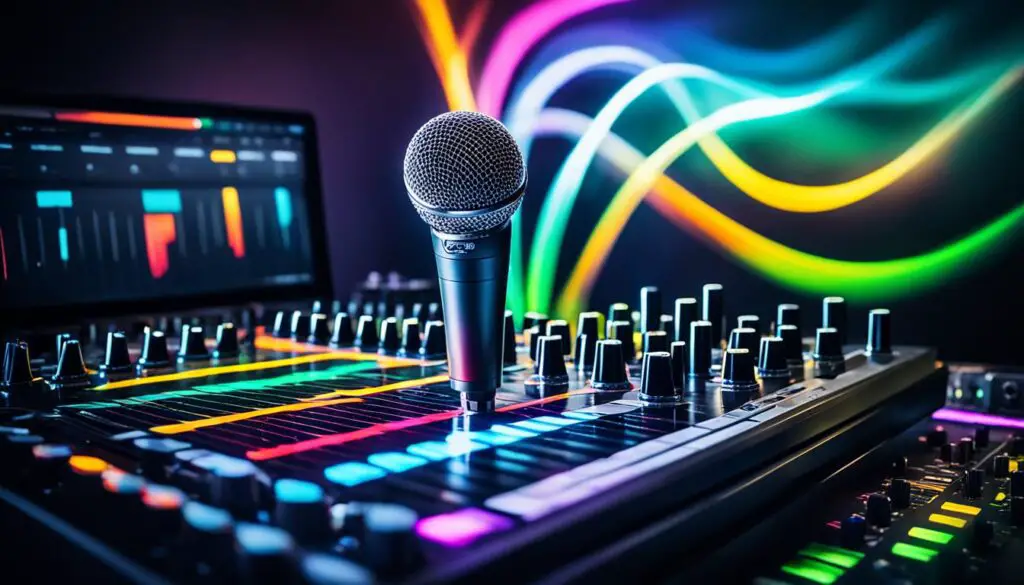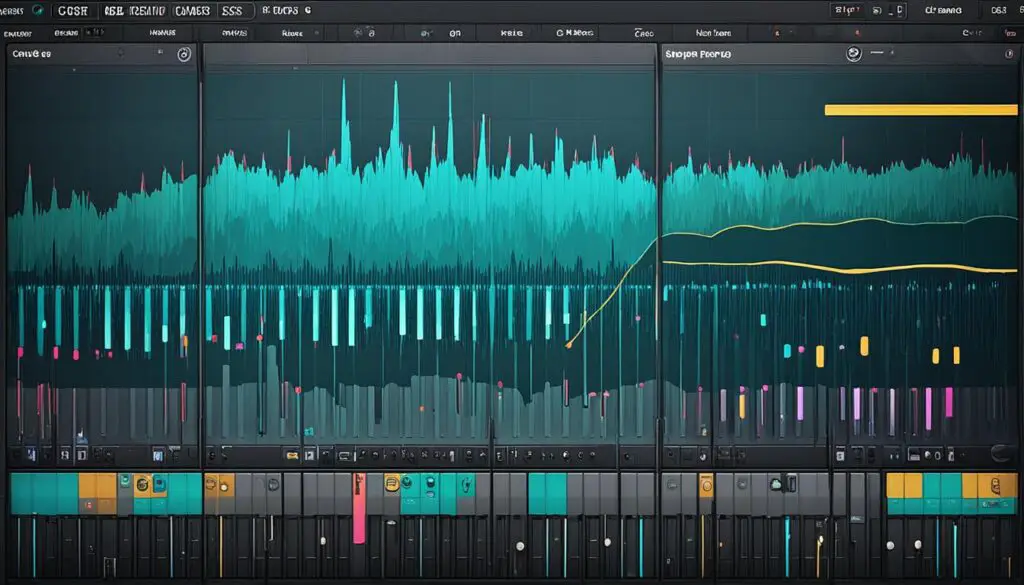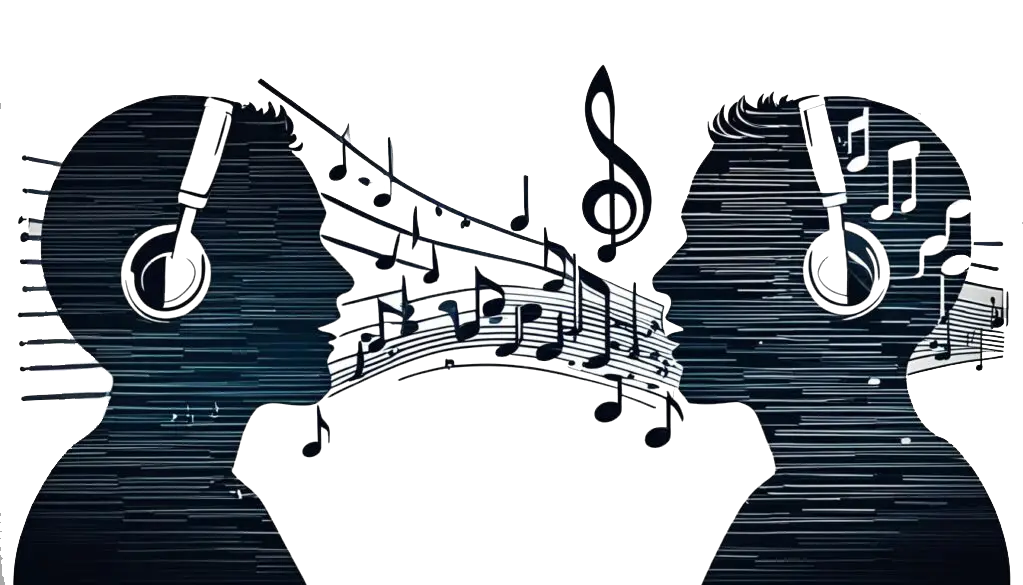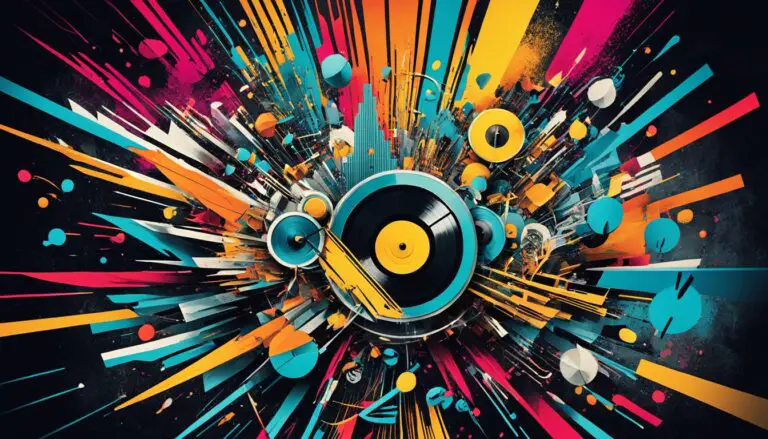What role does EQ play in mashups?
Mashups are a key way for top DJs to make new songs and shine in the music world. They take vocals and beats from different songs and mix them together using software like Ableton Live. This method lets DJs create unique tracks that no one else has, and it helps them learn music production skills.
Equalizers (EQ) are very important in making mashups work. DJs use EQ to adjust the sound of vocals and instruments. This makes different songs sound good together. EQ helps DJs focus on specific sounds, fix sound problems, and make each part of the mix clear.
We’ll look at the basics of mashups and how EQ helps make them sound great. You’ll learn how to make vocal tracks stand out and balance sounds for smooth transitions. This guide will give you the skills to make your mashups really pop in the remix scene.
Understanding Mashups and EQ Basics
In music production and DJ culture, mashups are a creative way to make new tracks. They blend parts from one song with another to create something new. This often means mixing the beat of one song with the vocals of another, using music production or DJ software.
The Role of EQ in Music Production
Equalization, or EQ, is key in music production and DJ mixing. It lets artists control the sound by adjusting different frequencies. EQ is vital for making mashups sound smooth and balanced.
By using EQ, producers can make sure all parts of a mashup work well together. This makes the final product polished and engaging.

For music producers or DJs, knowing EQ is crucial for making great mashups. Mastering frequency control can take your mashups to the next level. It helps blend different musical parts into a single, captivating track.
Vocals-Over-Beat Mashup and EQ Techniques
Making a great vocals-over-beat mashup needs careful EQ use. The main task is to separate the vocal from the original song. This lets it blend well with a new beat.
Isolating Vocal Tracks with EQ
EQ is key for getting clear, isolated vocals from a song with many parts. By cutting certain frequencies, you can remove the instruments and keep just the vocals. Here are some EQ tips for isolating vocals:
- Cutting low frequencies below 100 Hz to get rid of rumble and unwanted bass.
- Reducing high frequencies above 8 kHz to stop sibilance and background noise.
- Applying narrow, targeted cuts in the mid-range to take out the instrumental backing.
These EQ changes give you a clean vocal track. You can then layer it over a new beat, making the mashup.
Balancing Frequencies for Smooth Transitions
After combining the vocal and instrumental tracks, EQ is key for balance. It ensures the mashup sounds professional and cohesive. Here are some techniques:
- Adjusting mid-range EQ so the vocals fit well in the mix without getting lost.
- Cutting or boosting low and high frequencies to avoid clashes between the vocal and instrumental parts.
- Utilizing dynamic EQ to fix specific issues and keep the vocals and beat smooth.
By fine-tuning EQ, mashup artists can make a smooth mix of vocals and beat. This creates a deep listening experience for the audience.

Advanced EQ Techniques for Mashup Artists
Skilled mashup artists go beyond the basics with advanced EQ techniques. They use surgical EQ to fix specific issues, dynamic EQ to adjust audio on the fly, and combine it with compression and reverb. This creates unique, polished mixes from different songs.
Surgical EQ is a key technique for vocal-over-beat mashups. It helps remove unwanted sounds. This makes the mix cleaner and more cohesive.
Dynamic EQ is another powerful tool. It changes sound automatically based on the music. This is great for handling vocals that change volume or arrangement, keeping the sound balanced.
Artists also mix EQ with compression and reverb. This fine-tunes the mashup, making it sound polished and professional. It shows their skill in music production, audio editing, and remix culture.
Top mashup artists focus on the vocals and the beat. They blend vocal harmonies and vocal sampling expertly. Their deep EQ knowledge and experimentation make their mashups stand out.
They pay close attention to detail. This sets them apart, making their music captivating. It inspires others in a cappella and dj mixing.
Harmonically Mixing with EQ
When mixing tracks for a vocals-over-beat mashup, it’s key to make sure the harmonies fit well. EQ helps adjust the sound of each track to match. This means cutting or boosting certain sounds to fit the overall key and sound. Tools like the Camelot Wheel can also help pick tracks that go well together.
Matching Keys and Tonal Qualities
Even if the key and sound of the mashup parts match, frequency clashes can still happen. EQ is great for making room for each part, so they don’t get mixed up. By carefully adjusting EQ, like cutting out unwanted low or mid sounds, you can get a clean, balanced mashup.
Preventing Frequency Clashes
For a smooth blend, producers need to focus on the sound of each vocal and instrumental track. EQ helps match the keys and sounds, making a vocals-over-beat mashup that sounds good together. This careful attention is key to making a professional-sounding mix that pulls you in.
| Technique | Description |
|---|---|
| Camelot Wheel | A tool that helps identify harmonically compatible musical keys, enabling producers to quickly find tracks that will blend well together. |
| Frequency Carving | The process of using EQ to create space for each element in a mix, preventing frequency clashes and ensuring a clear, balanced sound. |
| Tonal Matching | Adjusting the overall timbre and character of tracks using EQ to ensure they complement each other and create a cohesive vocals-over-beat mashup. |
Conclusion
Equalization (EQ) is key for mashup artists. It lets them mix different sounds into one great song. By adjusting EQ, artists can make vocals stand out and blend different tunes smoothly.
EQ helps in making vocals-over-beat mashups, a cappella tracks, and vocal harmonies. It’s a powerful tool for producers. They use it to fine-tune their music, just like DJ mixing experts do.
EQ opens up new ways for artists to express themselves. It’s crucial for making tracks that grab listeners. As mashups grow more popular, knowing how to use EQ will set apart the best artists.
EQ is more than just a technical skill in music production and remix culture. It’s a way for artists to explore new sounds. With EQ, mashup artists can break genre rules and create unforgettable music.







